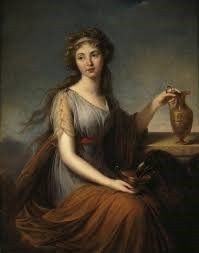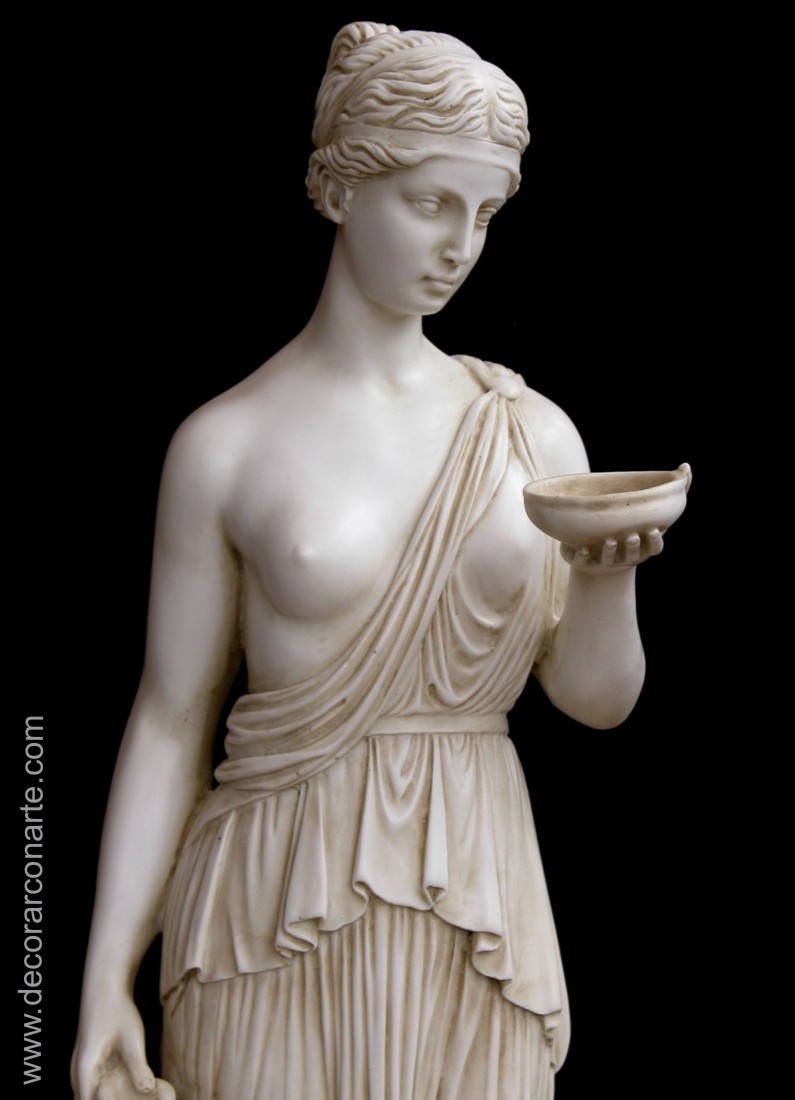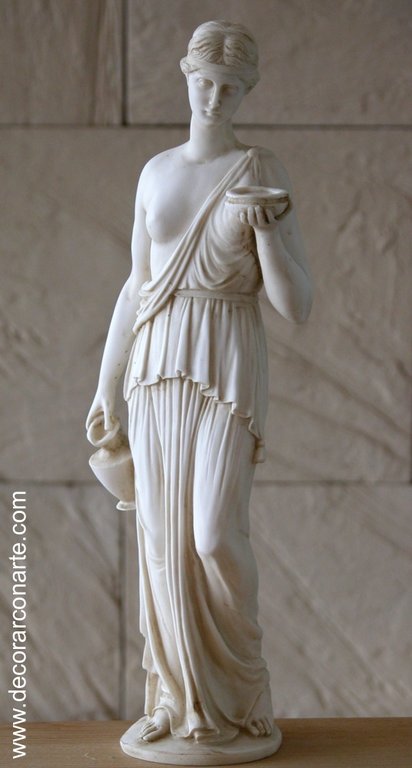

Hebe represents in Greek mythology the personification of youth; she is the daughter of Zeus and Hera, known as the goddess entrusted with imparting vitality to both humans and beasts. Additionally, in the Iliad, she is portrayed as the one designated to serve the gods and provide them with the nectar and ambrosia they consume during their council.
Mythology also recounts that the goddess Hebe was punished by Zeus when she stumbled while serving him nectar. For this reason, she was relieved of her duty as cupbearer and was replaced by Ganymede, a Trojan prince whom Zeus was enamored with. Hebe’s story culminates when she marries Hercules, as he ascends to Olympus after completing the tasks imposed by Hera. The goddess was offered to the demigod as a symbol of the eternal youth he had attained by becoming immortal, and later, she bears him two children.

The veneration of the goddess Hebe continued during the Roman Empire. In this culture, it was a tradition for young people to present a coin as an offering to the goddess, whom they called Juventas, the first time they wore the toga virilis. This gesture demonstrated their respect and emphasized the importance for them of staying young and strong to defend the empire.
Devotion to youth was a constant and strongly present theme in art. During the 17th century, the trend of portraying maidens as if they were Hebe herself became popular; this was clearly a way of praising the beauty and youth of the depicted young lady.

Neoclassicism meant the revival of representations of the classical world, making Hebe’s presence in art much more noticeable, especially in her role as the cupbearer of the gods. Sculptors were primarily her greatest followers, and there are two artists who achieved great fame for the technique of their sculptures.
On one hand, there is Antonio Canova, an Italian sculptor. His work was so successful at the time of its unveiling that the artist had to create more than one replica, which are now exhibited in various museums around the world. Canova’s work depicts a joyful and dynamic Hebe; it seems as if the sculpture had frozen just in the second before the goddess’s fatal stumble.
On the other hand, there is the sculpture by Bertel Thorvaldsen, a Danish artist. This work also had two versions, one from 1806 and the other from 1816. In both works, a much more serene and dutiful maiden is portrayed compared to Canova’s. It seems that the goddess is making her greatest effort to avoid the mistake that would demote her within the hierarchy of Olympus. Both sculptures by Thorvaldsen are exhibited in the museum in Copenhagen dedicated to the dissemination and preservation of the work of this notable artist.
You can find different sculptures of the Goddess of Youth on our website:








